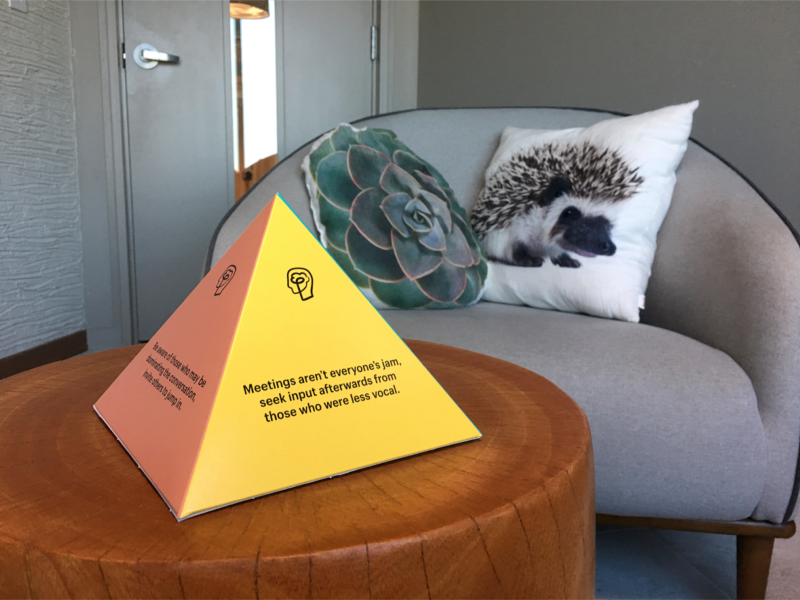This article appeared earlier on Medium and LinkedIn and is republished here with the author’s permission.
How I learned to create more inclusive and functional teams
I’m a UX lead at Shopify, which means I focus on the quality of product experience and help my small team of designers, content strategists, and UX researchers do the same. In September of last year, I was asked to speak at Designer Fund’s Women in Design event, which made me reflect on how my own experience as a woman in design and tech informs how I lead my team.
Central to how I lead is the fact that throughout my career, I’ve often found myself the only woman (or at least among a very small minority) on the teams I’ve been on. I know I’m not the only woman in this situation. Six years ago, when I joined Shopify, this is what my team looked like:
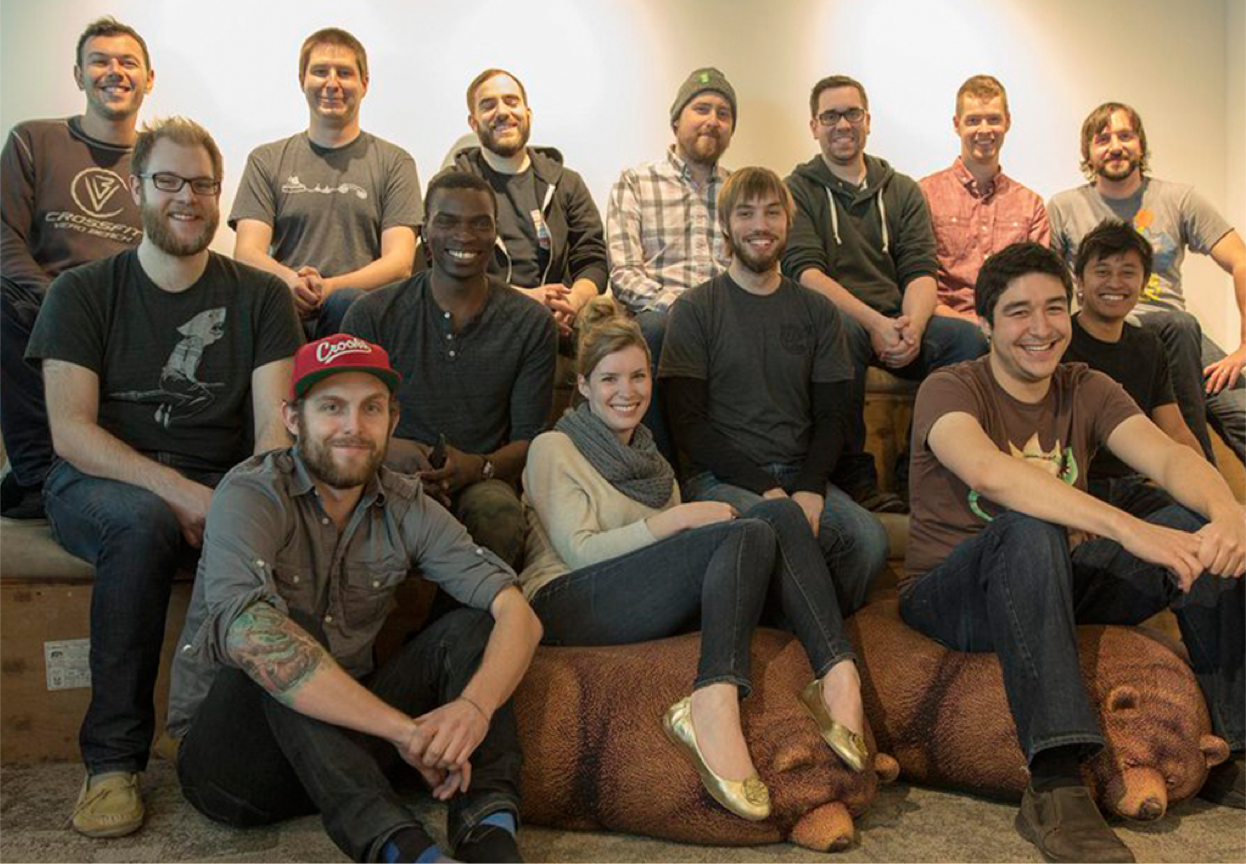
The team I was working with starting in 2012 at Shopify. Photo by Nick Looijmans.
I’m the one in the front wearing the gold shoes, in case you’re struggling to find me. It’s important to point out that this was a great team. We established Shopify’s mobile platform and launched core mobile products such as Shopify for mobile and Shopify POS: Point of Sale.
Despite working with wonderful people on interesting problems, on any given day I felt intimidated for no other reason than because I was the only woman. And yet my solution to feeling intimidated was often to isolate myself further.
I’d carve out slices of work that I felt I could own independently, find a quiet corner, and avoid sharing my work in progress. This gave me a sense of control over my design work, and it made it easy to say “This is mine. I did this.” This do-it-myself approach felt like the best way to prove that I was a valuable contributor and that I deserved to belong.
But I eventually realized I wasn’t growing because I wasn’t exposing myself to different perspectives that could improve my work. I also was limiting my impact by working alone, rather than cultivating collaboration with the entire team.

I wish I had a clear aha! moment where I realized all of this. But it was a combination of factors during a time that Shopify was rapidly growing and becoming more complex, and I (along with everyone else) had to take on more and more responsibility. To increase my impact, and to be a good role model to other women joining the team, I had to change how I worked.
Of course, identifying a problem and implementing a solution are two different things. I assumed it would be a daily struggle to make my point of view understood, especially since I’m an extreme introvert. (And at that time the only woman on my team, but I think I mentioned that already.)
While this type of experience is not exclusive to women, I think it’s something a lot of women in tech can relate to. And it’s something we, as women, can use to help lead inclusive and functional teams. I now passionately believe that cultivating collaboration is the best way to get the most out of all team members — especially those who are underrepresented and feel less comfortable sharing their thoughts and ideas.
I’m still in the middle of my journey as a UX lead, but here are three ways I’ve learned to cultivate collaboration with my team:
- Understand each other as individuals
- Facilitate inclusion
- Be each other’s stakeholders
Understand Each Other as Individuals
Everyone on my team fills out a fun personal blueprint to help get to know one another. It’s a practical overview that outlines how we, as individuals, like to receive feedback, our work quirks, and what people on our team can come to us for. Every team member has one. Here’s mine.
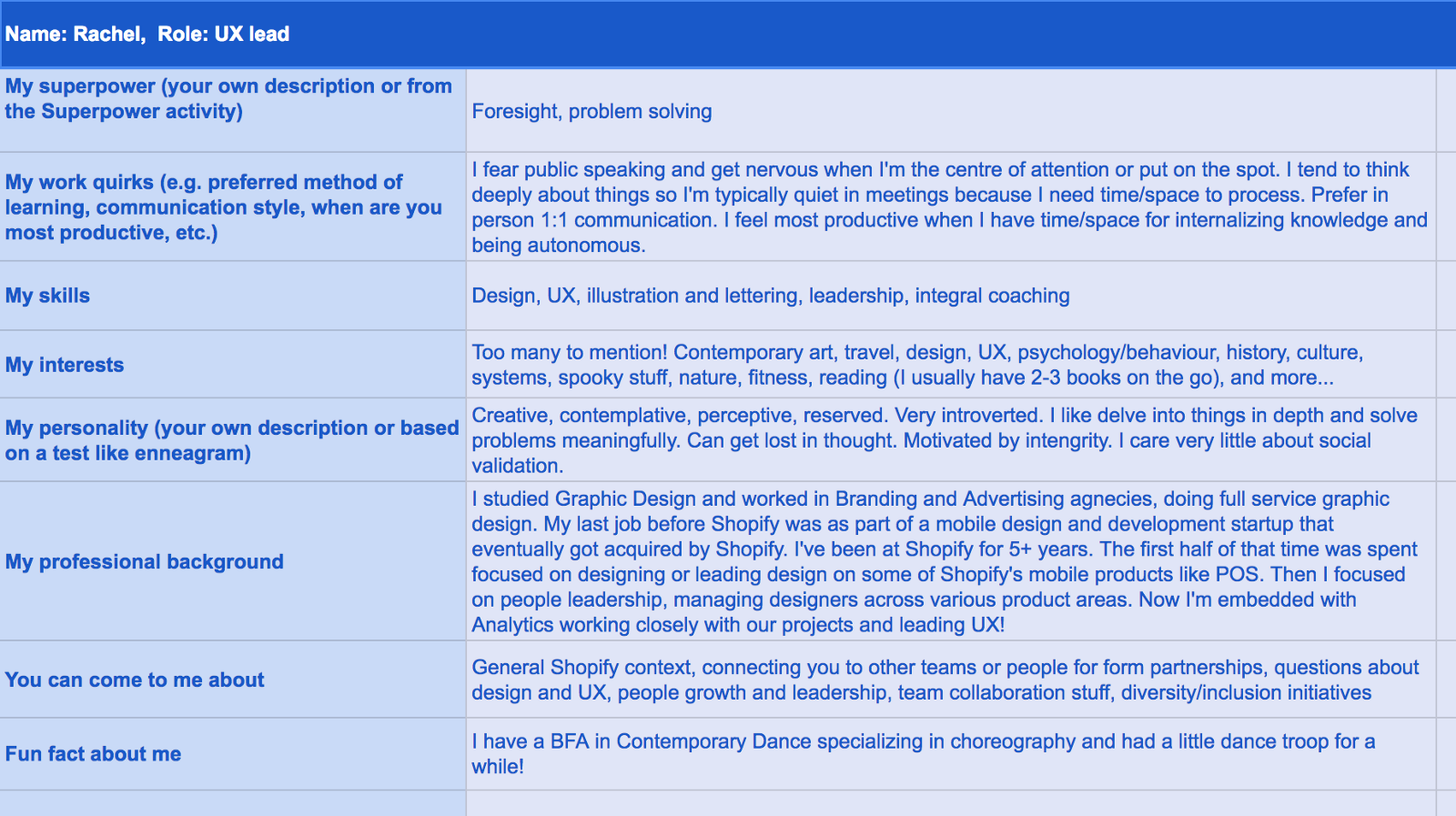
My personal blueprint that I share with my team.
My blueprint lets the team know how much I fear public speaking or any type of putting myself out there. And it’s because I’ve started sharing this with my team that I decided to face my fear and speak at Women in Design last year, as well as publishing this article! I’m growing with their encouragement, but that wouldn’t have happened if I hadn’t taken the first step and opened up.
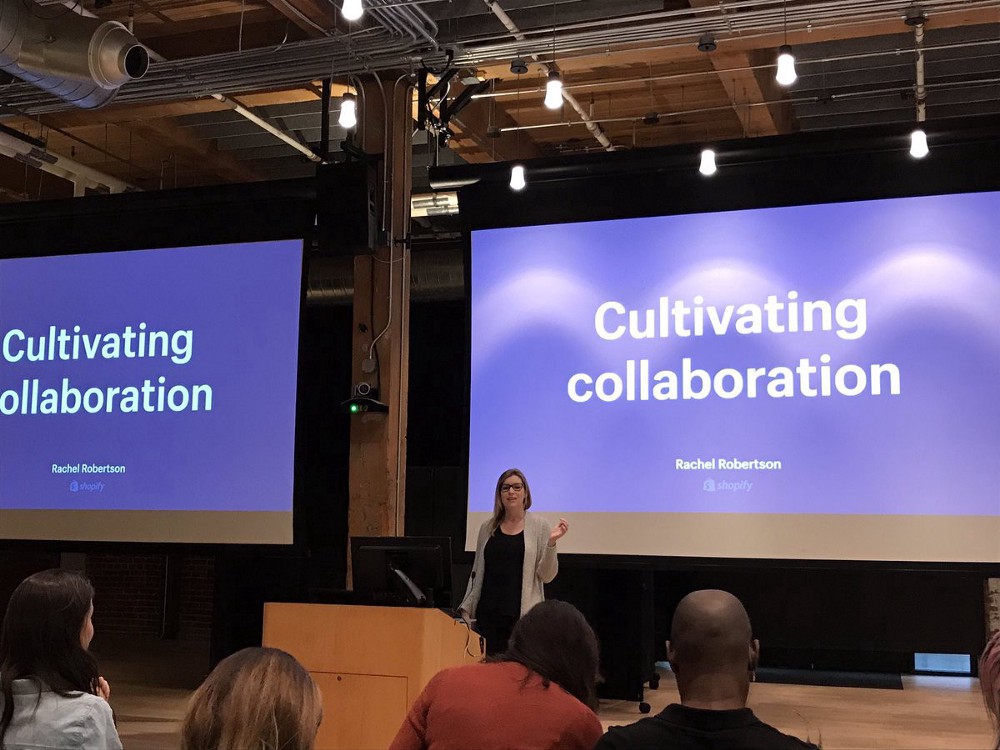
Speaking at Women in Design last fall. Photo by Emma Craig.
By understanding each other as individuals, the team is in a better position to identify collaboration opportunities and working style.
I also show genuine interest in the people I lead on my team. We’ll often have coffee or lunch together, where we chat about things that aren’t directly related to work. Like our latest hobbies, what we’re reading, opinions about bad reality TV, and so forth.
This creates trust because it lets my team know I care about them as people and gives me fuller context about what they value. This, in turn, helps me lead more effectively. Understanding each other as individuals is key for teams learning how to work well together.
Facilitate Inclusion
At Shopify, we have inclusion pyramids in every meeting room and common space. They say things like: “Meetings aren’t everyone’s jam. Ensure you follow up with individuals for feedback after.” They’re a good reminder that some people may be less vocal in meetings because of their personality or because they may feel like they’re in the minority.
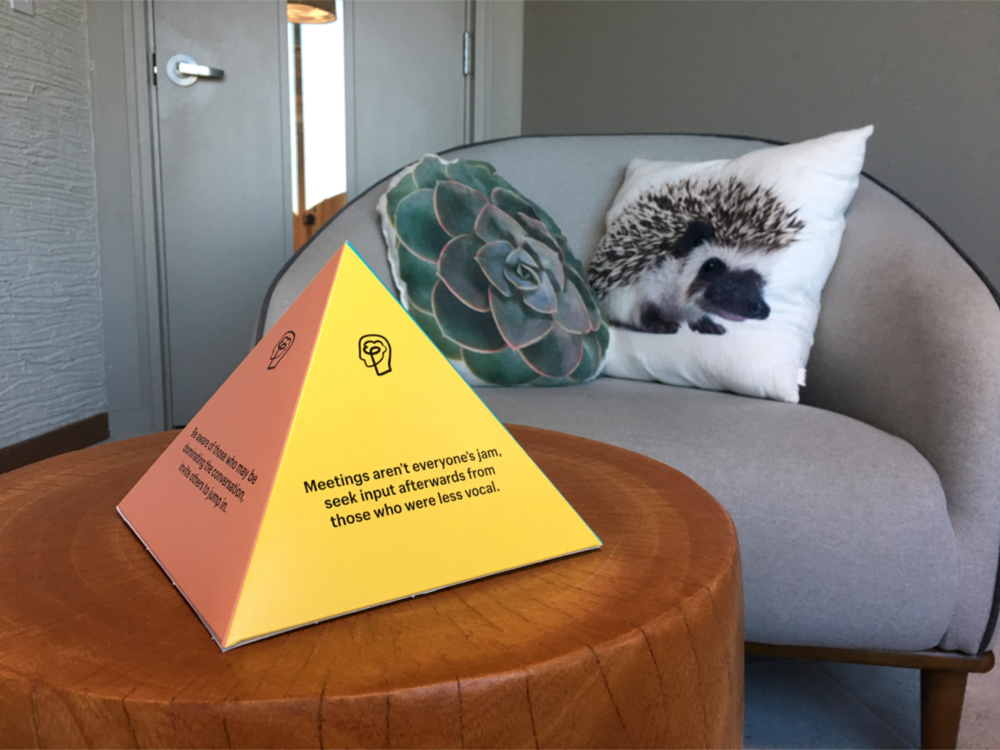
Inclusion pyramids, designed by Shopify’s culture team based on our inclusive meeting tips.
As a lead, I facilitate inclusion within my own team by considering what individuals need to successfully collaborate and how I can create space for them to do that. Put another way, it means I try to wear a pyramid hat at all times.
A while ago I noticed that someone on my team always provided valuable input one on one, but seldom spoke up in meetings. I followed up with them after a meeting to ask for their input — this also gave me the opportunity to ask them why they didn’t speak up. The reason? Everyone in the group was quite a bit younger. Although they had a wealth of experience and knowledge, they sometimes worried that their ideas would be perceived as dated or irrelevant.
After reassuring them, I made a point to ask for their thoughts ahead of time and encouraged them to provide input at meetings. I also started creating deliberate space for them in meetings, circling back if they hadn’t had a chance to speak and crediting them for their ideas in front of others.
Facilitating inclusion is about getting the best contributions from everyone on your team by considering what each individual needs to succeed and creating the space to help them do so.
Be Each Other’s Stakeholders
At the end of each day my UX team sets aside half an hour to share knowledge and feedback. The focus of those 30 minutes rotates between three themes:
- Domain expertise: Discussing industry news and trends relevant to our product area (Analytics)
- UX feedback: Sharing UX work in progress and working through blockers
- User empathy: Highlighting UX research insights about user needs and support issues related to our current product experience
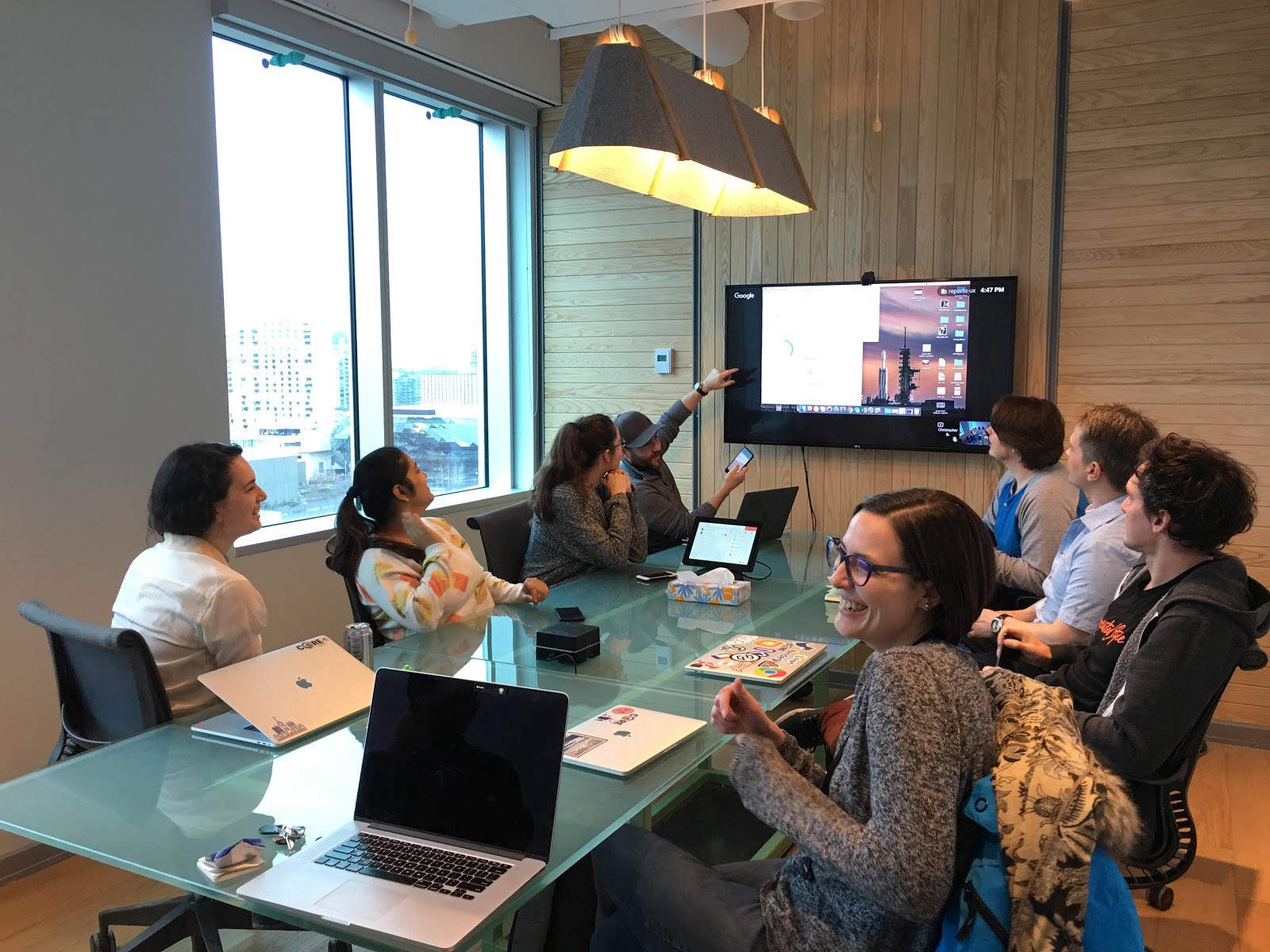
We work on a fairly broad area of Shopify, tackling complex problems across multiple projects. Our daily sessions put an emphasis on working together and reinforces a sense of collective purpose, elevating individuals and the team as a whole. It also fosters dialogue about our domain for continuously developing our expertise. The team provides and receives regular feedback, benefiting from each other’s perspectives. Everyone gets context about UX decisions happening between each other’s work, which provides a sense of shared responsibility for all of our projects.
A ritual like this makes everyone a stakeholder in one another’s success.
Cultivating Team Success
Cultivating collaboration is the best thing I’ve done to have a positive impact on my team and the work we do.
As a woman, I’ve previously seen my lack of representation in the workplace as a challenge or as a barrier to success. Instead, I believe my experiences have uniquely positioned me to foster a culture of collaboration that brings out the best in everyone.
Cultivating collaboration has meant clear, measurable improvement on my team and the work everyone produces. My team is more functional and inclusive — and less isolated. I’m confident in the products we ship because we’re always improving our work, and how we work together.
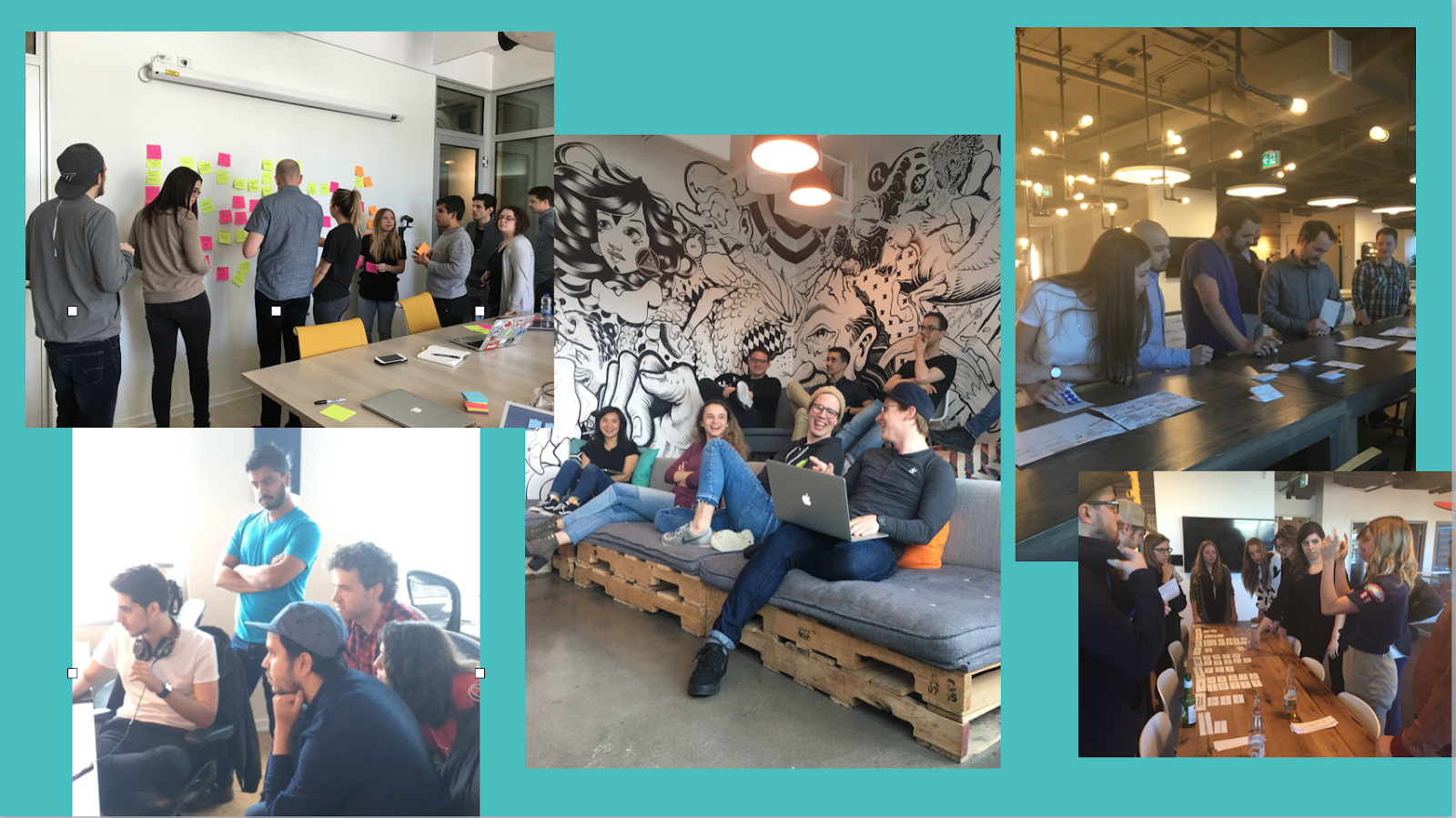
#ShopifyUX #LifeAtShopify
This article is based on a talk I gave at Designer Fund’s 6th annual Women in Design event on September 28, 2017. Thank you Ryan Bigge and Vivienne Kayfor your editing prowess.
